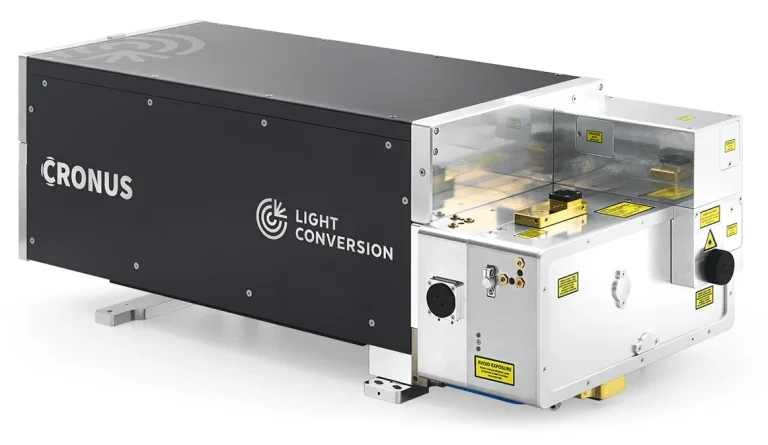生物组织中的非线性显微镜
非线性显微镜是一种强大的技术,能够对活体内的结构进行成像,具有亚微米级分辨率,成像深度可达毫米级。结合基因编码的钙指示剂和视蛋白,多光子荧光(MPEF)显微镜彻底改变了神经成像领域,正成为神经科学研究中的标准工具。无标记方法,如二次谐波和三次谐波产生(SHG 和 THG)、相干反斯托克斯和受激拉曼散射(CARS 和 SRS),已发展成为超高灵敏度的结构和化学成像技术。
非线性显微镜所依赖的非线性光学过程需要高光强,而当超短光脉冲被紧密聚焦时,即使在低平均功率下也能达到这一光强。这一特性被用于实现光学切片,并提高散射组织深层的成像对比度。多光子激发是指当两个或多个光子同时经过分子附近时,它们的能量叠加用于激发分子,从而产生荧光。多个光子的同时到达还可能导致谐波产生 —— 即频率为激发激光频率两倍或三倍的辐射。谐波产生是一种固有的无标记对比度,由样品的分子有序性和均一性决定,可用于表征这些特性。
高阶的三光子和四光子激发荧光(3PEF 和 4PEF)显微镜值得特别关注,因为它能够在传统显微镜技术无法企及的深度进行成像,尤其是在大脑等强散射样品中。最重要的是,现代激光源能够以所需的重复频率运行,并提供实时功能性脑成像所需的脉冲能量,满足生物相关深度的成像需求。
Light Conversion 的产品组合包括专为非线性显微镜设计的飞秒激光源 CRONUS-2P 和 CRONUS-3P。这些激光器涵盖多种应用,包括功能性神经成像、光遗传学、利用中等重复率三光子激发的深层成像、快速高重复率双光子成像,以及利用高功率激光源的宽场和全息激发。关于非线性显微镜用激光源的完整列表以及最先进的应用案例,可参见我们的最新手册。

Multimodal 3D imaging of a live zebrafish at 1300 nm excitation using CRONUS-3P.
3PEF – green, trans SHG – yellow, epi THG – dark blue,
trans THG – cyan.
Courtesy of Luigi Bonacina group, University of Geneva.

Multimodal 3D imaging of a live zebrafish at 1300 nm excitation using CRONUS-3P.
3PEF – green, trans SHG – yellow, epi THG – dark blue,
trans THG – cyan.
Courtesy of Luigi Bonacina group, University of Geneva (2024).




